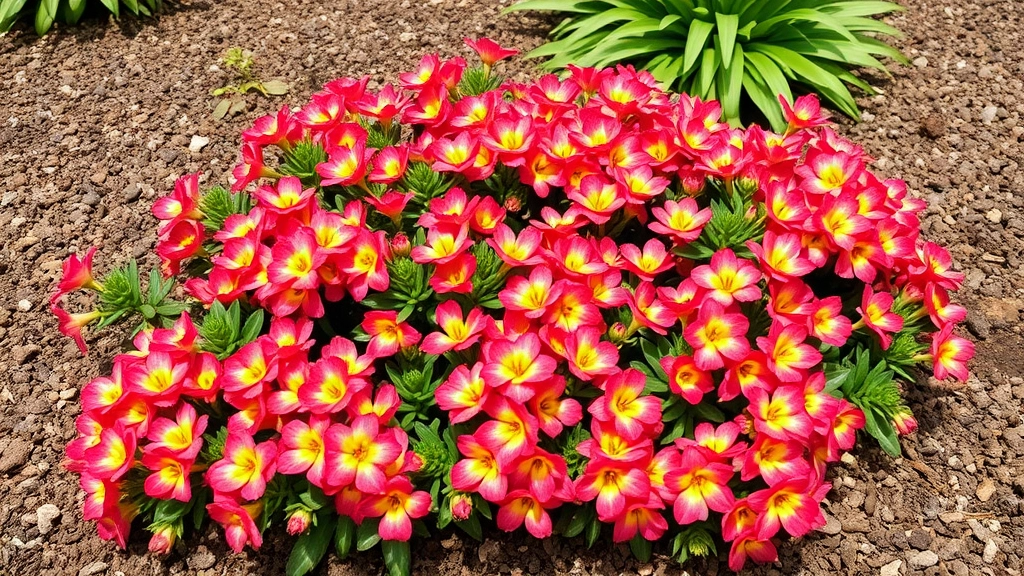Growing Kalanchoe Outdoors
Looking to grow Kalanchoe outdoors in the ground? You’re in the right place. As a seasoned gardener, I’ve found that the key to thriving Kalanchoe is selecting the ideal planting site. Opt for a spot that gets plenty of sunlight and offers well-draining soil. This ensures your Kalanchoe will get the nutrients and light it needs to flourish.
Preparing the Soil
Preparing the soil is crucial. Enrich the ground with organic matter to boost fertility and drainage. Once your soil is ready, choose the best Kalanchoe varieties for outdoor planting.
Recommended Varieties
- Kalanchoe blossfeldiana – Perfect for garden beds.
With the right care, your Kalanchoe will reward you with vibrant, long-lasting blooms.
Ideal Planting Site for Kalanchoe
When considering where to plant Kalanchoe, many gardeners often wonder about the best conditions for this resilient succulent.
Location Matters
The ideal planting site for Kalanchoe should offer:
- Well-draining soil: Kalanchoe thrives in soil that allows excess water to escape. This prevents root rot and encourages healthy growth.
- Sunlight: A location that receives at least six hours of sunlight each day is essential. Kalanchoe loves bright light, and insufficient sunlight can lead to leggy growth and fewer blooms.
- Protection from harsh elements: While Kalanchoe is hardy, it benefits from some shelter against strong winds and heavy rain. A spot near a wall or fence can provide this protection.
Soil Type
The soil should be:
- Sandy or loamy: This type of soil enhances drainage and reduces the risk of waterlogging.
- Slightly acidic to neutral: A pH range of 6.0 to 7.0 is optimal for Kalanchoe.
Accessibility
Choose a site that is easy to access for maintenance tasks such as watering and pruning. For more detailed information on how to plant Kalanchoe, you can refer to our step-by-step guide. Additionally, if you are looking for specific varieties, our comprehensive Kalanchoe species list can be very helpful.
Preparing the Soil for Outdoor Kalanchoe
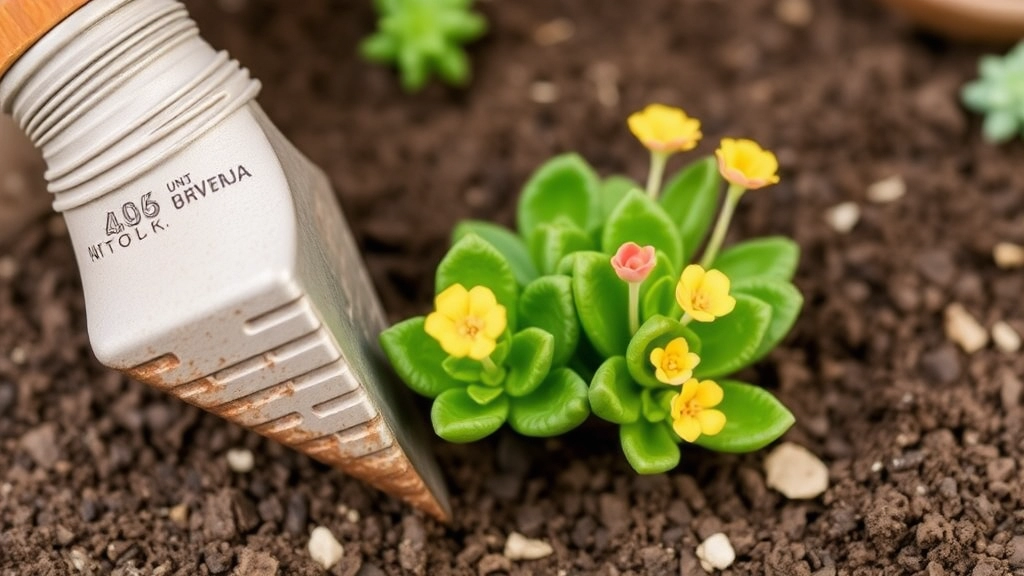
So, you’ve picked the perfect spot for your Kalanchoe, and now it’s time to get your hands dirty.
But here’s the thing: not all soil is created equal.
What’s the Big Deal About Soil?
Kalanchoe thrives in well-draining soil. If your soil retains too much moisture, you might end up with root rot, and nobody wants that.
Here’s how to prepare your soil for planting:
- Check the Drainage: Dig a small hole about 12 inches deep. If water pools in there after a rain, you’ll need to improve drainage.
- Mix in Sand or Perlite: This helps break up heavy soil. Aim for a mix that’s about 50% garden soil and 50% sand or perlite.
- Add Organic Matter: Compost is your best friend here. It enriches the soil while improving drainage. A couple of handfuls mixed in should do the trick.
- pH Level: Kalanchoe prefers a slightly acidic to neutral pH (around 6.0 to 7.0). You can test your soil with a simple kit from the garden centre.
Ready, Set, Go!
Once you’ve prepped the soil, it’s time to plant.
Fertilization Tips for Ground-Planted Kalanchoe
When it comes to nurturing your Kalanchoe in the ground, fertilization plays a vital role in promoting healthy growth and vibrant blooms. You might be wondering, “How often should I fertilize?” or “What type of fertilizer is best?” Let’s delve into some straightforward tips to ensure your Kalanchoe thrives.
Best Kalanchoe Varieties for Outdoor Planting
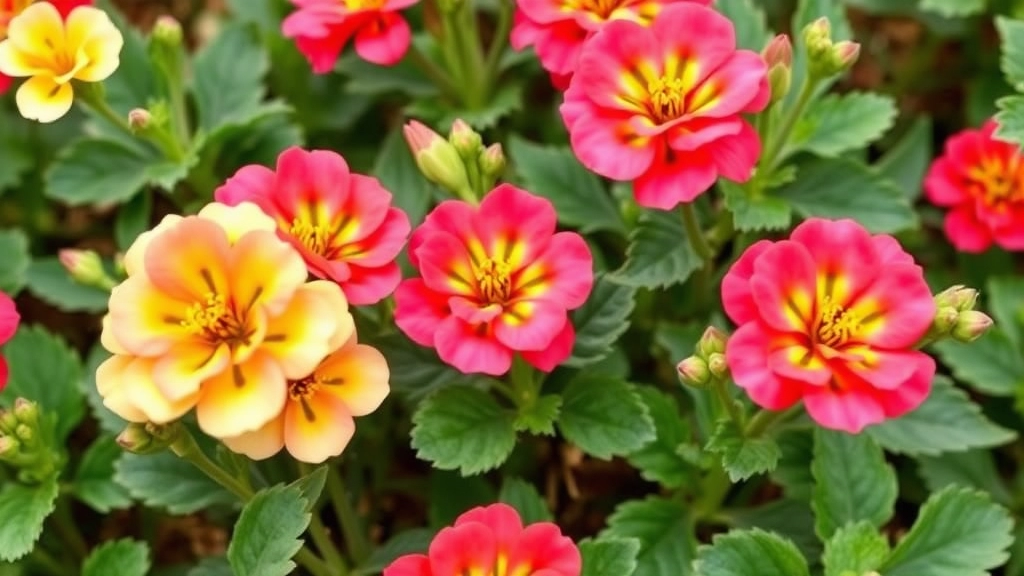
When considering the best Kalanchoe varieties for outdoor planting, it’s crucial to choose those that thrive in your specific climate and conditions. Many gardeners worry about which types will flourish outside, especially in varying weather conditions.
Here are some of the top Kalanchoe varieties ideal for outdoor planting:
- Kalanchoe blossfeldiana: Known for its vibrant flowers, this variety is popular for its hardiness and ability to bloom profusely. It thrives in well-drained soil and can tolerate direct sunlight.
- Kalanchoe luciae: Commonly referred to as the “Flapjack” plant, it features stunning, flat, round leaves that turn a beautiful red in full sun. This variety is drought-tolerant and perfect for warmer climates.
- Kalanchoe tomentosa: Also known as “Panda Plant,” it has fuzzy, grey-green leaves with brown edges. This variety is excellent for outdoor gardens, especially in slightly shaded areas.
- Kalanchoe beharensis: This variety, known as “Paddle Plant,” boasts large, paddle-shaped leaves and is ideal for those looking for a unique aesthetic. It prefers well-drained soil and moderate sunlight.
- Kalanchoe fedtschenkoi: With its striking silvery-blue leaves and cascading growth habit, this variety adds a unique touch to any garden. It thrives in full sun and is drought-resistant.
Choosing the right variety not only enhances your garden’s beauty but also ensures your Kalanchoe plants thrive outdoors.
Steps for Planting Kalanchoe in the Ground
Planting Kalanchoe in the ground can be a rewarding experience, but knowing the right steps can make all the difference.
1. Choose the Right Time
Timing is crucial. The best time to plant Kalanchoe outdoors is during spring after the last frost. This allows the plant to establish its roots in warmer soil.
2. Select a Suitable Location
Find a spot that receives plenty of sunlight. Kalanchoe thrives in well-drained areas, so avoid places where water tends to pool.
Watering and Drainage Considerations
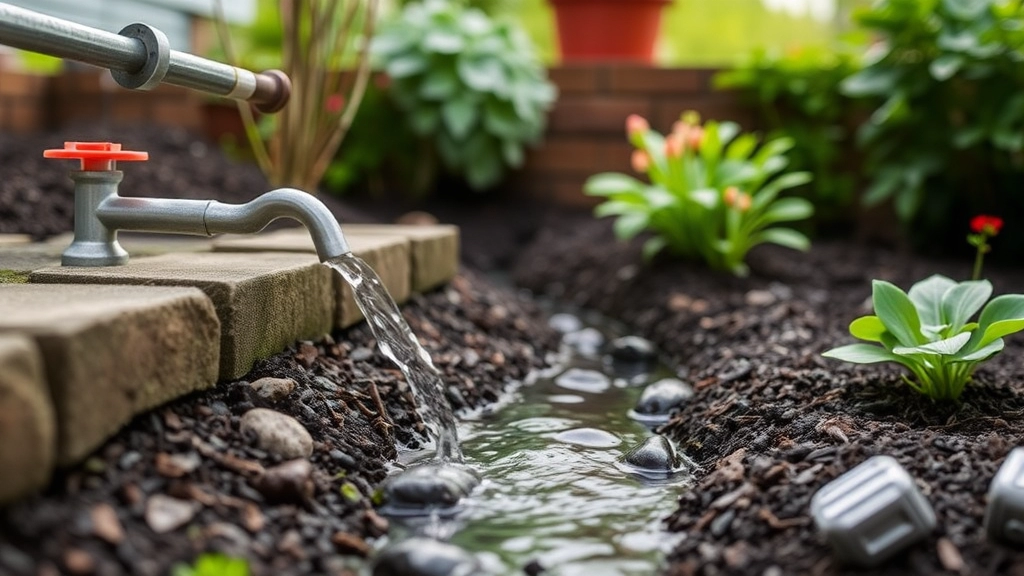
So, you’ve picked the perfect spot for your Kalanchoe, and now you’re probably wondering how to keep it thriving. One of the biggest concerns is watering and ensuring proper drainage.
Watering Tips:
- Frequency: Kalanchoe prefers to dry out between waterings. Aim to water every 2-3 weeks, but adjust based on the weather. If it’s hot and dry, you might need to water more often.
- Method: Water deeply but infrequently. This encourages the roots to grow deeper into the soil, making your plant stronger.
- Signs to Watch: If the leaves start to look wrinkled or shrivelled, it’s a sign your Kalanchoe needs a drink. On the flip side, yellowing leaves might indicate overwatering.
Drainage is Key:
- Soil Type: Ensure you’re using well-draining soil. A mix designed for succulents or cacti works wonders.
- Planting Position: If your Kalanchoe is in a spot where water tends to pool, consider elevating it or creating a raised bed. This helps prevent root rot.
- Container Consideration: If you’re planting in pots, make sure they have drainage holes. No one wants soggy roots!
Sunlight and Temperature Requirements
When considering outdoor planting for Kalanchoe, you might be wondering about the ideal sunlight and temperature conditions.
Kalanchoe thrives in bright, indirect sunlight but can adapt to full sun in cooler climates. Here are some key points to keep in mind:
Acclimatizing Indoor Kalanchoe for Outdoor Growth
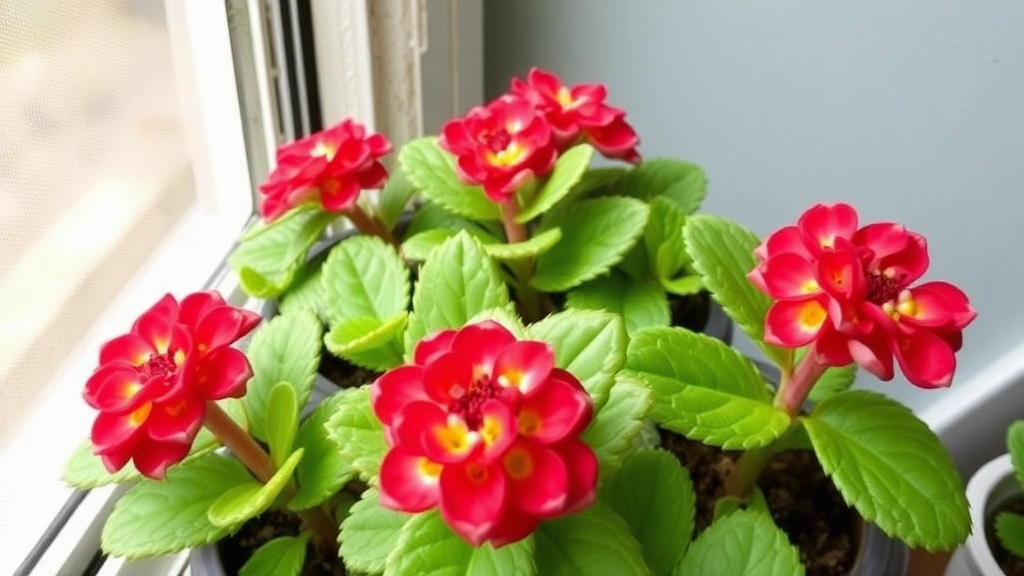
So, you’ve got your indoor Kalanchoe thriving, and now you’re thinking about moving it outdoors. Sounds exciting, right? But how do you make sure it doesn’t freak out in the new environment? Let’s dive into acclimatizing your Kalanchoe for outdoor growth.
Why Acclimatize?
Jumping straight from a cozy indoor setting to the great outdoors can be a shock for your plant. Acclimatization helps ease that transition, reducing stress and ensuring your Kalanchoe adapts well to its new digs.
Steps for Acclimatization:
- Start Slow:
- Begin by placing your Kalanchoe outside for a couple of hours each day.
- Gradually increase the time over a week or two.
- Choose the Right Spot:
- Find a shaded area to start with. Direct sunlight can be too harsh initially.
- Monitor Temperature:
- Keep an eye on the weather. Avoid exposing your plant to extreme temperatures.
- Watch for Signs:
- Look out for droopy leaves or discoloration. These could be signs your plant is stressed.
- Water Wisely:
- Water your Kalanchoe before moving it outside. This gives it a hydration boost.
- Fertilize Lightly:
- If you’ve been fertilizing indoors, cut back a bit during acclimatization. Too much food can overwhelm it.
Final Touches:
Once your Kalanchoe seems comfy in its outdoor spot, you can gradually introduce it to more sunlight. It’s all about patience and observation.
Pruning and Maintenance Practices
When it comes to keeping your Kalanchoe thriving, pruning and maintenance are crucial steps that can make a significant difference. Many gardeners worry about how to properly care for their plants to ensure they flourish outdoors.
Why Prune Kalanchoe?
Pruning serves multiple purposes:
- Encourages Growth: Removing dead or wilted leaves stimulates new growth.
- Enhances Appearance: A well-pruned plant looks tidier and more attractive.
- Prevents Disease: Regularly removing unhealthy parts can help prevent the spread of disease.
When to Prune
- After Flowering: Trim back spent blooms and any damaged leaves.
- Spring: A light pruning in spring can help shape the plant for the growing season.
How to Prune
- Use clean, sharp scissors or pruning shears.
- Cut just above a leaf node to encourage new growth.
- Remove any stems that are leggy or overcrowded.
Maintenance Tips
In addition to pruning, consider these maintenance practices:
- Regular Inspection: Check your Kalanchoe for pests or signs of disease.
- Cleaning Leaves: Dust can accumulate on leaves, so gently wipe them with a damp cloth.
- Mulching: Apply a layer of mulch to help retain moisture and suppress weeds.
For more detailed information on caring for specific Kalanchoe varieties, you might find our Kalanchoe Flapjack Paddle Plant Care Guide and Kalanchoe Mother of Thousands Varieties Care Guide helpful.
Common Challenges in Growing Outdoor Kalanchoe
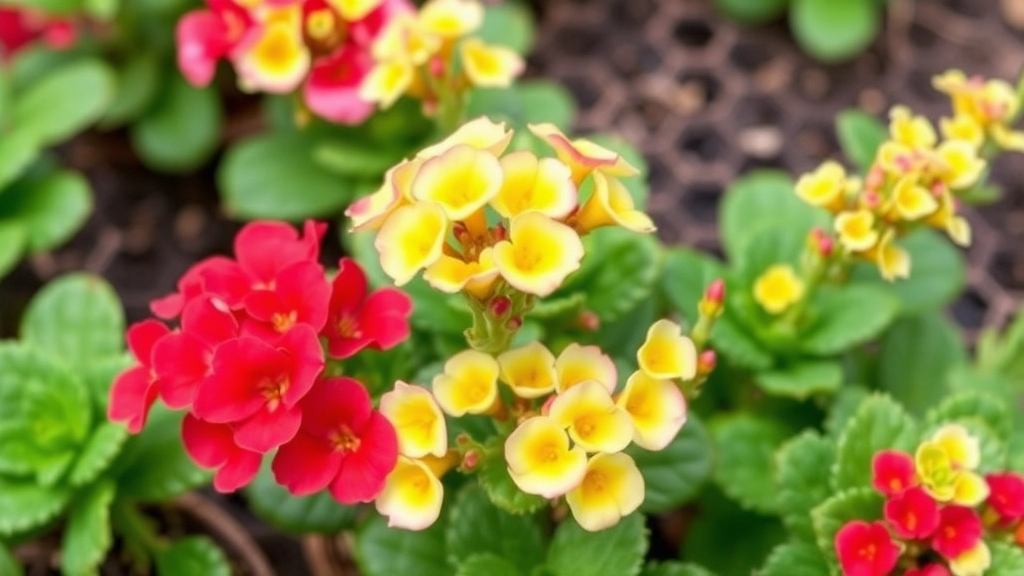
So, you’ve decided to plant Kalanchoe outdoors. That’s awesome! But let’s be real—growing these beauties outside isn’t always a walk in the park.
What are the main hurdles?
- Weather Woes
Kalanchoe loves warmth, but extreme weather can be a problem.- Frost: They don’t handle frost well.
- Heat: Too much sun can scorch their leaves.
- Soil Struggles
They thrive in well-draining soil. If your soil is too heavy, you could face root rot.
Tip: Mix in sand or perlite to improve drainage. - Watering Woes
Overwatering is a common pitfall.- How to tell? If the leaves feel mushy, you might be giving them too much love.
- Solution: Water only when the top inch of soil is dry.
- Pests and Diseases
Aphids and mealybugs can be a nuisance.- Prevention: Regularly check the undersides of leaves.
- Treatment: A gentle soap spray can work wonders.
- Sunlight Issues
Too little light can lead to leggy growth, while too much can cause wilting.
Ideal Spot: Aim for partial shade, especially in hotter months. - Nutrient Needs
They don’t need a ton of fertiliser, but a lack of nutrients can stunt growth.
Tip: Use a balanced fertiliser during the growing season.
Overwintering Kalanchoe in Cold Climates
As we explore the nuances of outdoor Kalanchoe care, the challenge of overwintering in colder climates becomes paramount.
Why Overwintering Matters
Kalanchoe, being a succulent, thrives in warmer conditions. However, if you live in a region with harsh winters, you’ll need to take proactive steps to protect your plants from frost and freezing temperatures.
Key Strategies for Successful Overwintering
- Bring Them Indoors
If possible, before the first frost, pot your Kalanchoe and bring it indoors.
Place them in a well-lit area, ideally near a south-facing window. - Mulching
For those left outdoors, apply a thick layer of mulch around the base.
This helps insulate the roots and retain warmth. - Covering Plants
Use frost cloths or blankets to cover your Kalanchoe during extreme cold spells.
Ensure they are well-ventilated to prevent moisture build-up. - Watering Adjustments
Reduce watering significantly in winter.
Allow the soil to dry out completely between waterings to prevent root rot. - Temperature Monitoring
Aim to keep the temperature above 5°C (41°F) if possible.
Consider using a greenhouse or cold frame for added protection.
Signs of Stress
Keep an eye out for signs of stress, such as wilting or discoloration, which may indicate that your Kalanchoe needs more attention. For more detailed advice on protecting your plants, you might find the care and propagation of Kalanchoe synsepala particularly useful. Additionally, understanding the toxicity of Kalanchoe tomentosa can provide insights into ensuring a safe environment for both your plants and pets.
Pest and Disease Management
So, you’ve got your Kalanchoe planted and thriving, but what about those pesky pests and diseases that can ruin your hard work?
Common Pests to Watch For:
- Aphids: Tiny green or black bugs that suck the sap from your plants.
- Mealybugs: White, cottony pests hiding in leaf joints.
- Spider Mites: Tiny red or brown dots that spin fine webs.
Signs of Trouble:
- Yellowing leaves?
- Wilting or stunted growth?
- Unexplained spots or patches?
Quick Fixes:
- Neem Oil: A natural insecticide that works wonders.
- Insecticidal Soap: Spray directly on pests for instant results.
- Handpicking: For larger pests, like mealybugs, just pick them off.
Disease Prevention Tips:
- Good Airflow: Space plants out to prevent fungal issues. For more detailed advice, check out our pruning techniques.
- Avoid Overwatering: Too much moisture can lead to root rot. Learn more about the best soil for Kalanchoe.
- Healthy Soil: Use well-draining soil to keep your plants happy.
FAQs About Growing Kalanchoe Outdoors
What type of soil is best for planting Kalanchoe outdoors?
Kalanchoe thrives in well-draining soil. Mix garden soil with sand or perlite to improve drainage. Adding organic matter like compost can also enrich the soil and enhance drainage.
Which Kalanchoe varieties are best for outdoor planting?
Some of the best varieties for outdoor planting include:
- Kalanchoe blossfeldiana: Known for vibrant flowers and hardiness.
- Kalanchoe luciae: Features stunning, flat, round leaves that turn red in full sun.
- Kalanchoe tomentosa: Also known as “Panda Plant,” excellent for slightly shaded areas.
- Kalanchoe beharensis: Known as “Paddle Plant,” it has large paddle-shaped leaves.
- Kalanchoe fedtschenkoi: Striking silvery-blue leaves and drought-resistant.
How often should I water my outdoor Kalanchoe?
Water your Kalanchoe every 2-3 weeks, allowing the soil to dry out between waterings. Adjust the frequency based on weather conditions.
How can I ensure proper drainage for my Kalanchoe?
Use well-draining soil, and consider elevating the planting area or creating a raised bed if water tends to pool. If planting in pots, ensure they have drainage holes.
How do I acclimatize my indoor Kalanchoe for outdoor growth?
Start by placing your Kalanchoe outside for a few hours each day, gradually increasing the time over a week or two. Begin in a shaded area and monitor the temperature to avoid extreme conditions.
What are common challenges in growing Kalanchoe outdoors?
Common challenges include:
- Weather Woes: Kalanchoe doesn’t handle frost well and too much sun can scorch their leaves.
- Soil Struggles: Poor drainage can lead to root rot.
- Watering Woes: Overwatering can cause mushy leaves.
- Pests and Diseases: Aphids and mealybugs can be a nuisance.
- Sunlight Issues: Too little light leads to leggy growth, too much can cause wilting.
- Nutrient Needs: A lack of nutrients can stunt growth.
How can I prevent pests and diseases in my outdoor Kalanchoe?
Regularly check the undersides of leaves for pests like aphids and mealybugs. A gentle soap spray can help treat infestations.
What should I do if my Kalanchoe leaves are turning yellow?
Yellowing leaves often indicate overwatering. Ensure the soil dries out between waterings and adjust your watering schedule accordingly.
References
-
How to Grow Kalanchoe Outdoors
-
Kalanchoe: Growing Indoors and Outdoors
-
How to Grow Kalanchoe
